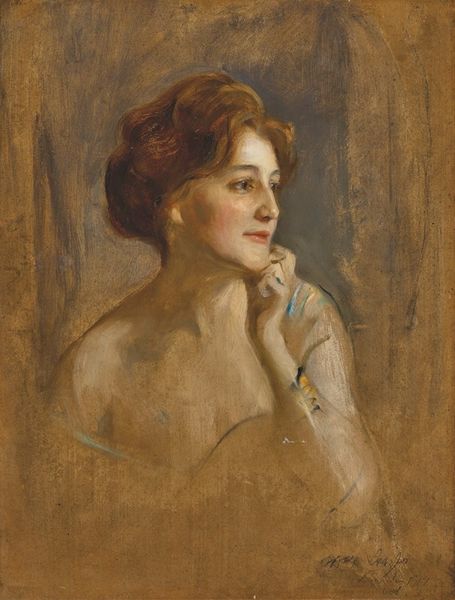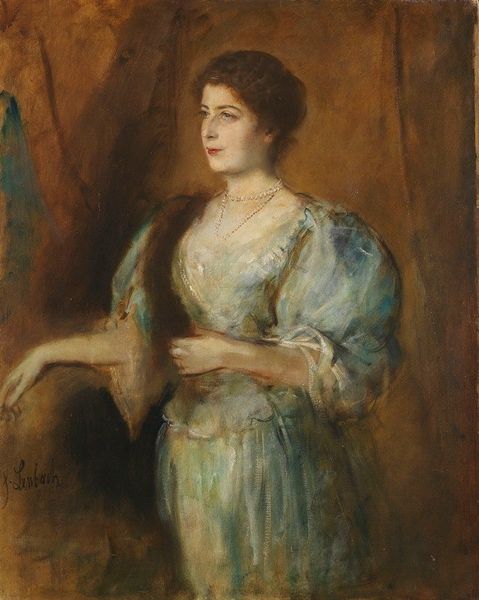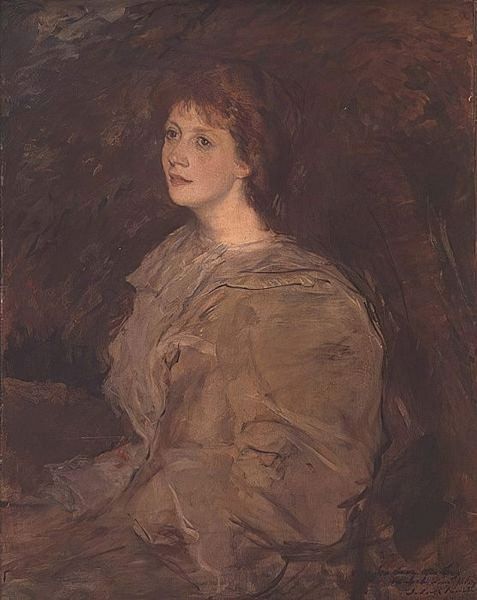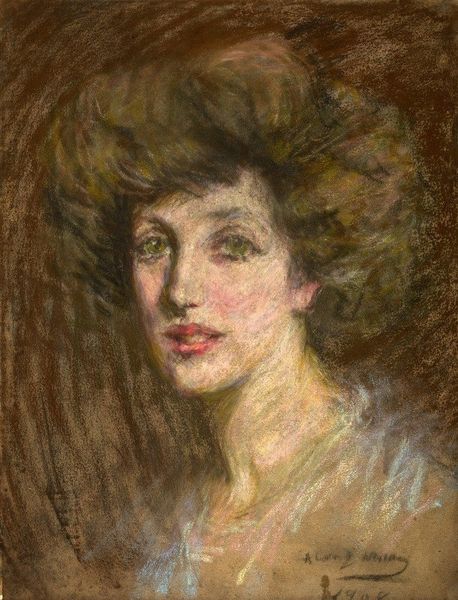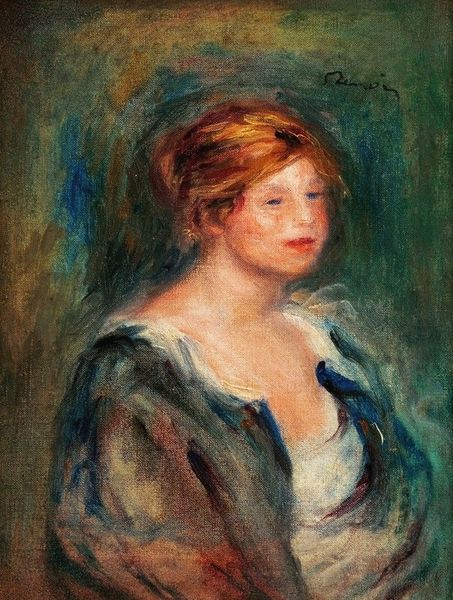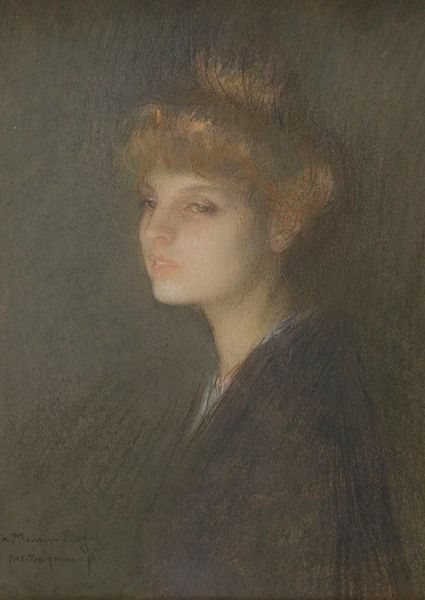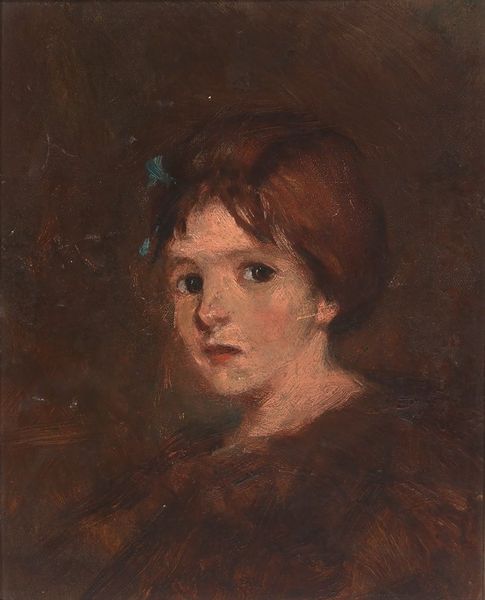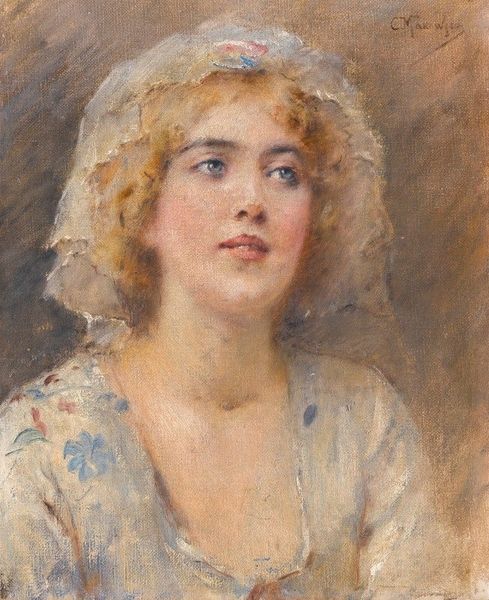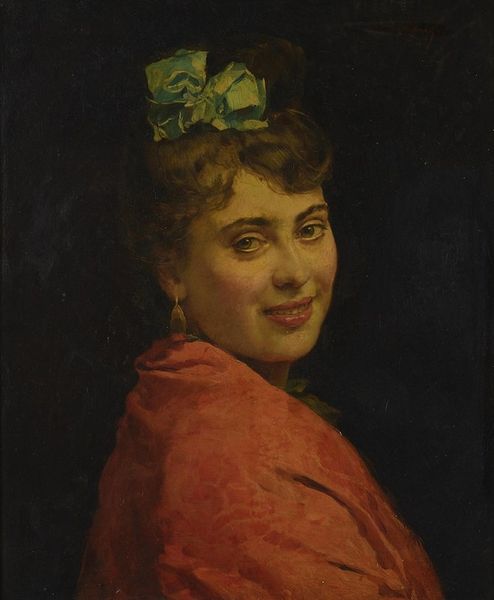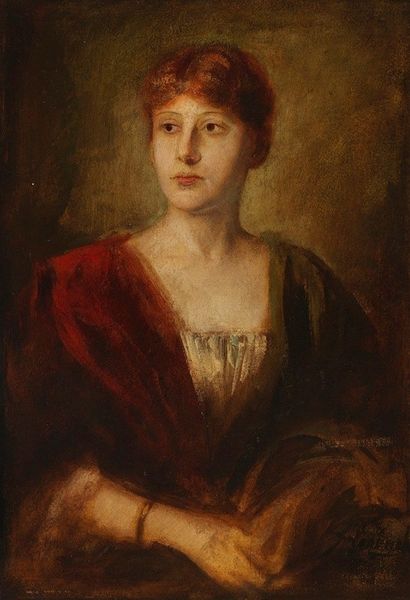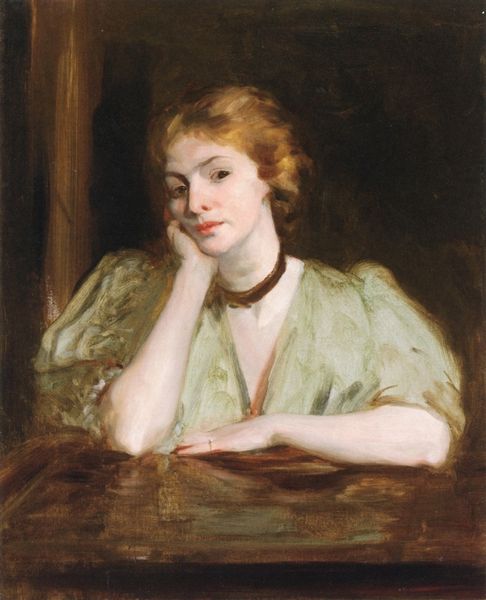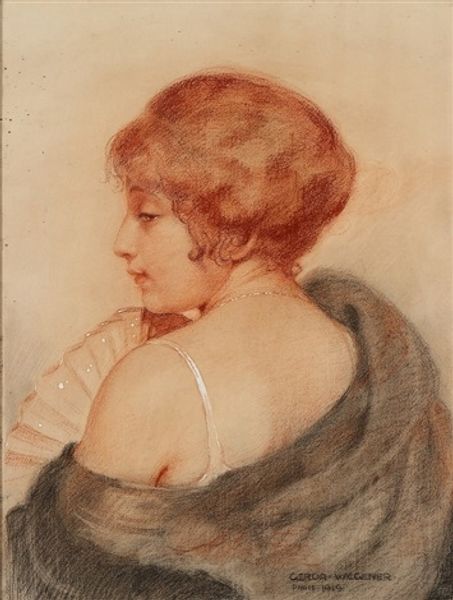
Copyright: Public Domain: Artvee
Curator: Standing before us is Franz von Lenbach’s portrait of "Lily von Poschinger," painted in 1900 using oil on canvas. Editor: The muted colors create such a wistful, almost dreamlike effect. It’s striking. Her upward gaze feels both hopeful and a little melancholy. Curator: Lenbach, a prominent portraitist, frequently depicted members of the aristocracy and upper class. Considering the context of 1900, this piece presents questions regarding the role of women in a society still grappling with gender inequality. Editor: I’m curious about the artistic process, particularly his choice of materials. What kind of oil paints would Lenbach have used? And how did the texture of the canvas contribute to the final, almost ethereal quality? Were these choices aligned with the expectation in portraiture, or was he pushing the boundaries of established techniques? Curator: He’s clearly working within the Impressionistic style while adhering to representational aesthetics suitable for portraying prominent women of the era, focusing on light, color, and capturing a fleeting moment. Editor: And think about Lily herself. As a woman of privilege, her image would have been carefully constructed, circulated, and consumed. A portrait such as this also highlights the socioeconomic disparities prevalent at the time— access to art and its production was a preserve of the few. Curator: Absolutely, Lily's identity and social standing are inextricably linked to this commissioned work. It becomes a material signifier of her place within society. It's also important to remember that the availability of pigment, the price of canvases, the workshop and training required… these all shape who gets to create art and who gets represented within it. Editor: Seeing the artistic choices, the way the paint is applied, prompts me to also wonder how the gaze of a female artist might differ from Lenbach's, what stories might otherwise go untold… Curator: It’s compelling to consider the painting beyond just aesthetics, unpacking the layers of class, gender, and labor intertwined with its creation and reception. Editor: Examining these nuances really highlights the vital role art plays in preserving a social record. Curator: Indeed, thank you for helping explore those nuances, encouraging all to reflect on both art and its creation.
Comments
No comments
Be the first to comment and join the conversation on the ultimate creative platform.
